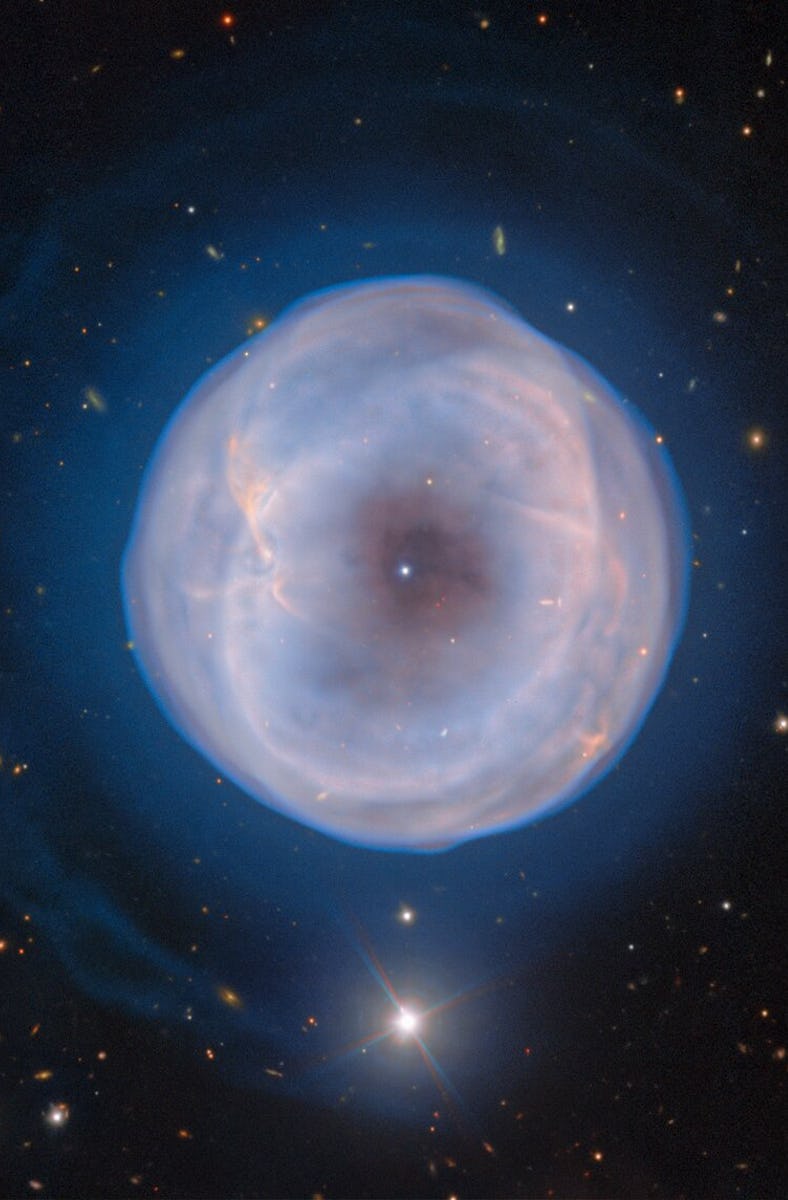Gaze Into This Ethereal Nebula and Glimpse Our Solar System's Future
Captured by Chile’s Gemini South Telescope, this Spare Tire Nebula looks more like a crystal ball to us.

Some 3,000 light years away, shimmering layers of gas formed an almost perfect sphere around the faintly glowing, burned-out core of a dead star. The result looks like a giant crystal ball floating in space — and if you stare into it too long, you can almost see a giant cosmic eye staring back. Don’t be fooled by the serene beauty of this image, as those diaphanous clouds of gas are roaring outward at around 112,000 miles an hour.
The Gemini South Telescope, perched high in Chile’s Andes Mountains, recently captured this ethereal image of the Spare Tire Nebula, also known as IC 5148 — and it’s potentially a glimpse into the future of our own Solar System.
IC 5148 is one of the fastest-expanding planetary nebulae astronomers have ever seen.
In 5 billion years, our Sun will fuse the last of its stockpile of hydrogen into helium. The nuclear energy that at one point pushed back against the force of gravity will sputter and die, and our Sun will collapse inward on itself. The immense force will crush the Sun’s middle layers with such tremendous heat and pressure that hydrogen fusion will start again. The energy from this new fusion will push outward against gravity, puffing up the Sun’s outer layers like a balloon of fire that will eventually engulf the inner Solar System (yes, that includes Earth).
Eventually, the dying Sun will shrug off its outer layers with a last dramatic sigh, sending hundreds of thousands of times Earth’s mass in hot gas rippling away into space. What’s left at the center of our Solar System will be a white dwarf — the Sun’s dead core, glowing like a hot coal and slowly cooling — surrounded by a sphere of gas expanding outward into space. Some of that gas will include molecules that used to be part of our Earth, long since swallowed by the swelling Sun.
Although IC 5148 is a type of object called a planetary nebula, it has nothing to do with planets (except that the dead star at its center probably ate a few of them) and actually stems from a misunderstanding. When these nebulas were first discovered around 1894, when IC 5148 itself was first spotted, researchers called them “planetary nebula” because they looked like giant planets when, in fact, they were stellar remnants.
Hopefully, when the end finally comes, our Solar System will make a planetary nebula as picturesque as IC 5148.
This article was originally published on